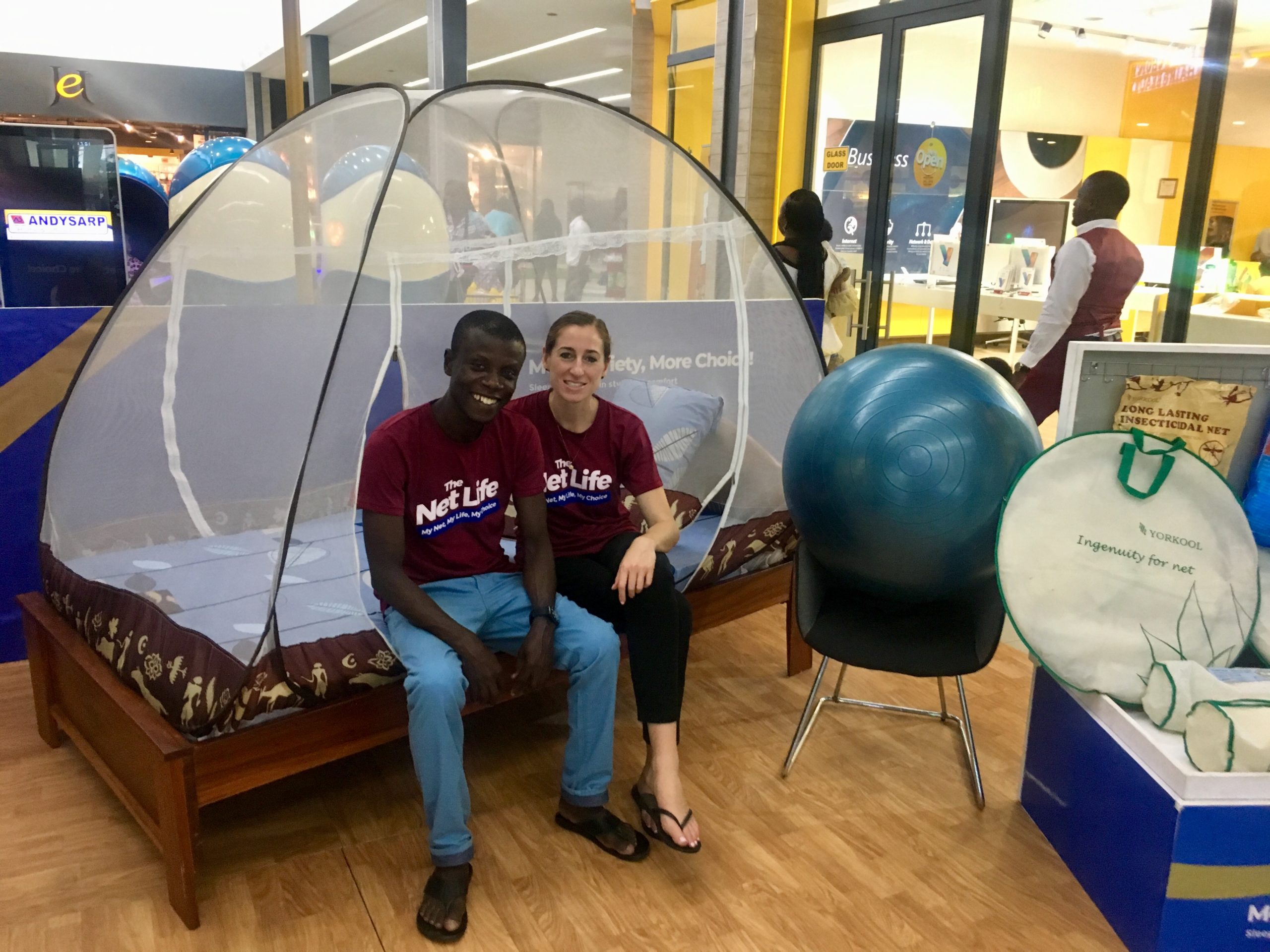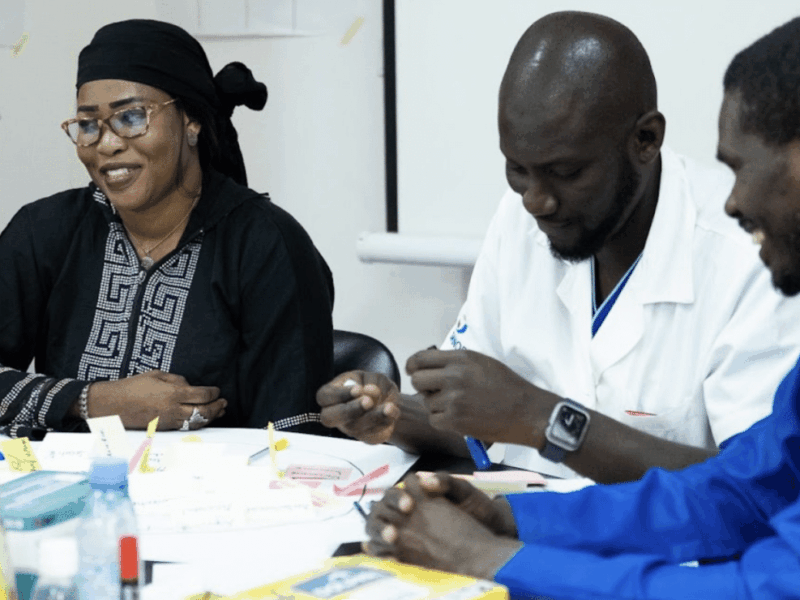The Johns Hopkins Center for Communication Programs recently named Danielle Piccinini Black, a senior program officer, as its Design Innovation Lead. In this newly created role, she will help centralize human-centered design work across CCP, facilitate an internal process to help CCP continue to build design expertise, as well as design and implement HCD research and activities on country and global projects. “We believe this is an important area of investment for CCP’s future and are excited to have Danielle take this on as there is much to learn from the work we have done,” Executive Director Susan Krenn told staff in announcing the new role.
CCP’s Stephanie Desmon recently sat down with Piccinini Black to discuss her work not only at CCP but the overall concept of design thinking and how it can be used in development and communication work around the world.
Stephanie Desmon: Danielle, CCP has recently named you its Design Innovation Lead and you teach about Design Thinking at the Johns Hopkins Carey Business School. What is design thinking and what does it mean in this context?
Danielle Piccinini Black: Design Thinking is a creative problem-solving process that is rooted in empathy. It emphasizes the importance of keeping those for whom you are designing central to the process and, in doing so, leads to the development of innovative solutions that directly meet the needs and desires of the target audience/user. While there is sometimes a misconception that design thinking can only be used for product development, it is actually a rather flexible process and can be used for much more than that – including solving a problem, improving a system or process, and coming up with a new intervention or program.
I often get the question, “What’s the difference between design thinking and human-centered design (HCD)?” The easiest way to differentiate the two is that HCD is a framework or mindset that emphasizes the human perspective, and design thinking is processes that leverages that mindset to achieve innovation.
SD: How important is human-centered design in developing social and behavior change programs that are effective and equitable?
DPB: HCD is extremely important for designing and developing SBC programs that respond to the needs of those for whom they are designed. It’s one thing to root SBC in research, but another thing to couple that research with intentional engagement with key stakeholders. Doing this ensures that what is designed is not only research-based, but also most effectively responds to the needs and desires of the target audience as they see them.
Design Thinking encourages the use of multidisciplinary teams when tackling a challenge. In doing so, it provides an opportunity to leverage different people’s perspectives, expertise, and experiences to create novel solutions. Additionally, engaging the end users/target audience in the process ensures that they have a seat at the table when it comes to identifying solutions.
SD: The concept of involving end users of a product in its development isn’t new. How has CCP better incorporated this in its work in recent years?
DPB: That is right, CCP has always been dedicated to designing programs and initiatives that respond to the needs of users and has involved users in that process. The difference between what was done before and what’s being done now is that we are being even more intentional about it.
The first HCD project I did with CCP was the Private Sector Malaria Prevention project in Ghana beginning in 2016. For this project, we sought to create a commercial market for insecticide-treated bed nets so that Ghanaians could purchase nets when needed instead of relying on free donor-funded distributions. But how would we get folks to pay for bed nets when they were used to getting them for free? Yes, marketing and product positioning were options, but that would only take us so far. To truly get a market for these products up and running, the bed nets needed to be different.
To determine exactly what that differentiation looked like, my colleagues and I leveraged HCD and infused that into a larger market research study. We worked directly with potential users to identity barriers and facilitators to bed net use and solicited feedback through low fidelity prototype testing before finalizing designs that were ultimately produced and brought to market.
I remember at the end of one of these HCD sessions, I asked the participants if anyone had any final questions or comments. One woman stood up and said, “We’ve been given bed nets for free for years, but no one has ever taken the time to ask us what we want in a bed net. Thank you for asking us that today and taking our opinion into consideration.”
In that moment, I realized the power of HCD. In public health we aim to improve the health of individuals and communities, so it really only makes sense to include those individuals and communities in that process, as they know their needs and desires better than anyone else.
SD: How has the human-centered design process been different during the COVID-19 pandemic?
DPB: Prior to the COVID pandemic, the majority of HCD/design thinking work in global health was done in-person, using tangible tools, like Post-its and Sharpies.
When the pandemic hit, a decision needed to be made—were we going to halt this work until it was safe to travel again or were we going to find a way to do it virtually. I am proud to say that CCP made the decision, straight out of the gate, to attempt HCD/design thinking virtually and did so with great success.
CCP quickly adopted new virtual design thinking tools – like Mural and Jamboard – and adapted others (e.g., Google slides) to replace tangible tools used for in-person HCD work. There was a very steep learning curve, and I can say with confidence that CCP does fantastic virtual HCD work! I see this as a huge asset moving forward, as even when we can go back to being able to do in-person HCD, we will always be able to consider a virtual or hybrid option, and ultimately select the format that is best for each particular situation.
What do you see as the future of design thinking both at CCP and in the world at large?
When I talk to people about what I do, I find that it really resonates with them. More often than not I get a response like, “That makes so much sense. Why doesn’t everyone use it?” I am happy to say that more people are using it today than when I entered the field six years ago and I look forward to watching that trend continue.
I do think it’s very important for HCD professionals to continuously reflect on their use of the approach and to adjust it as needed. An HCD approach that works today with one group of people in one place might not work the same way with a different population in a different setting tomorrow. HCD is not one size fits all.
It is important that as we use HCD in our work at CCP that we remain human-centered in our approach. Just by using HCD doesn’t mean that we are being human-centered in our use of it. That requires intentionality and is on us to design our HCD work to meet the needs of those we are engaging in the process, the challenge at hand, the setting, and the constraints. Most importantly, we must always be ready and open to changes and modifications as the need presents itself.





